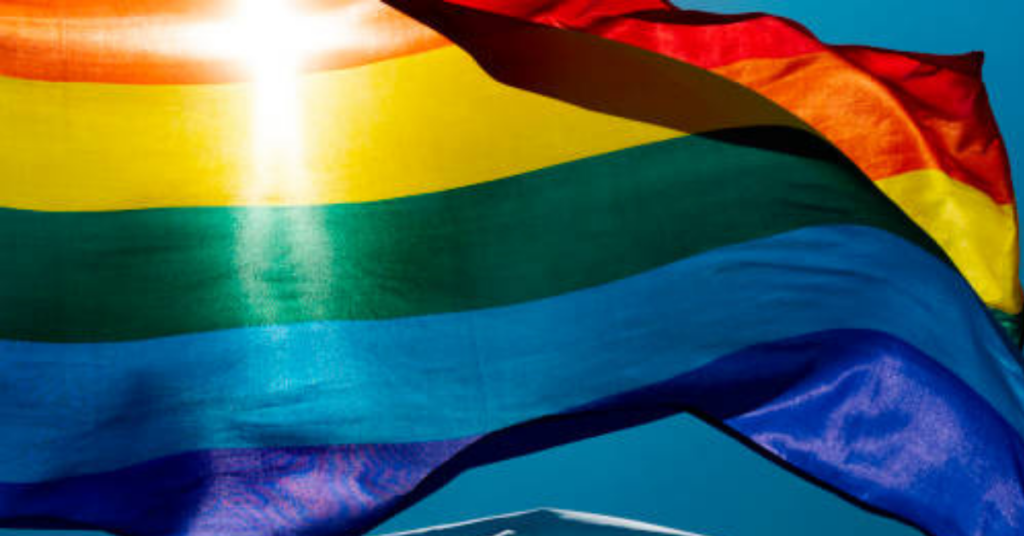Language is a living thing. It changes and evolves as time goes on. Our clinician breakdowns the terminology LGBTQIA+ using inclusive language.

It’s pride month!
Something that comes up in my office fairly regularly is the confusion straight and/or cisgender people express regarding the evolving acronym typically used to describe the LGBTQIA+ community. Some people aren’t clear on what the letters mean, while others don’t understand why letters continue to get added. My response is that language is a living thing. It changes and evolves as time goes on. Terms become forgotten, new terms are invented, and sometimes terms that were previously viewed as derogatory become reclaimed. The LGBTQIA+ acronym is no different. In effort to be more inclusive, it has been expanded and will likely continue to expand and evolve. As we enter into pride month, I thought I would take a minute to breakdown some of the terminology so that we can celebrate with friends, family members, neighbors, and strangers using inclusive language. While this list comes from the Human Rights Campaign’s Glossary of Terms, it is important to note that this list is not exhaustive. Further, these words are used to describe identity, sexuality, and relationships, so an individual can choose whatever terms they feel comfortable using and we should never assume.
Ally: A term used to describe someone who is actively supportive of LGBTQ people. It encompasses straight and cisgender allies, as well as those within the LGBTQ community who support each other (e.g., a lesbian who is an ally to the bisexual community).
Asexual: The lack of a sexual attraction or desire for other people.
Bisexual: A person emotionally, romantically or sexually attracted to more than one sex, gender or gender identity though not necessarily simultaneously, in the same way or to the same degree. Sometimes used interchangeably with pansexual.
Cisgender: A term used to describe a person whose gender identity aligns with those typically associated with the sex assigned to them at birth.
Gay: A person who is emotionally, romantically or sexually attracted to members of the same gender. Men, women and non-binary people may use this term to describe themselves.
Gender-fluid: A person who does not identify with a single fixed gender or has a fluid or unfixed gender identity.
Gender non-conforming: A broad term referring to people who do not behave in a way that conforms to the traditional expectations of their gender, or whose gender expression does not fit neatly into a category. While many also identify as transgender, not all gender non-conforming people do.
Intersex: Intersex people are born with a variety of differences in their sex traits and reproductive anatomy. There is a wide variety of difference among intersex variations, including differences in genitalia, chromosomes, gonads, internal sex organs, hormone production, hormone response, and/or secondary sex traits.
Lesbian: A woman who is emotionally, romantically or sexually attracted to other women. Women and non-binary people may use this term to describe themselves.
Non-binary: An adjective describing a person who does not identify exclusively as a man or a woman. Non-binary people may identify as being both a man and a woman, somewhere in between, or as falling completely outside these categories. While many also identify as transgender, not all non-binary people do. Non-binary can also be used as an umbrella term encompassing identities such as agender, bigender, genderqueer or gender-fluid.
Pansexual: Describes someone who has the potential for emotional, romantic or sexual attraction to people of any gender though not necessarily simultaneously, in the same way or to the same degree. Sometimes used interchangeably with bisexual.
Queer: A term people often use to express a spectrum of identities and orientations that are counter to the mainstream. Queer is often used as a catch-all to include many people, including those who do not identify as exclusively straight and/or folks who have non-binary or gender-expansive identities. This term was previously used as a slur, but has been reclaimed by many parts of the LGBTQ movement.
Questioning: A term used to describe people who are in the process of exploring their sexual orientation or gender identity.
Transgender: An umbrella term for people whose gender identity and/or expression is different from cultural expectations based on the sex they were assigned at birth. Being transgender does not imply any specific sexual orientation. Therefore, transgender people may identify as straight, gay, lesbian, bisexual, etc.
I hope this helped clear up some terminology for you to be able to use inclusive language throughout pride month and beyond!
Interested in speaking to LGBTQIA+ affirming therapist? Click to learn more.
Photo credit: Pixababy
Your partner in restoring inner peace,
Tracy Weathers
Supervisee in Social Work
